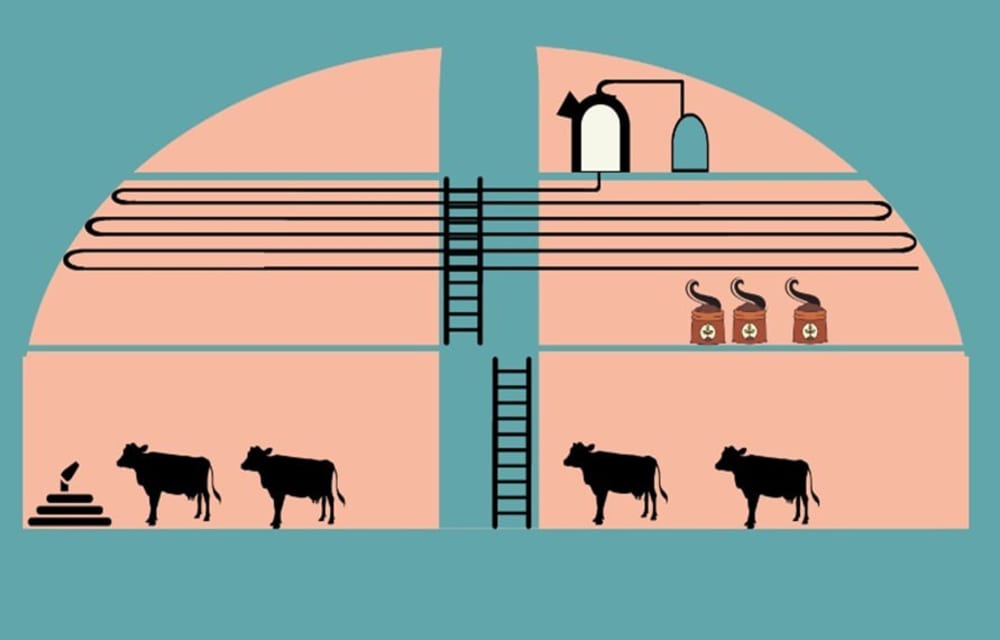This project aims to improve the global environmental situation by using renewable energy sources to reduce greenhouse gas emissions. The "Green Spiral" technology efficiently converts fresh KPC manure through anaerobic fermentation, producing high quantities of effective Fermented Organic Biofertilizers and Biomethane rich in microorganisms. These Biofertilizers enhance soil mineral composition and balance, leading to increased yields of eco-friendly products.
The process involves the activity of anaerobic bacteria, which produce Biomethane CH4 through the following reactions: CO2 + 4H2 → CH4 + 2H2O; CO2 + 2H2O → CH4 + 2O2. The methane is then burned to heat the biomass, thereby reducing greenhouse gas emissions of methane (CH4) and carbon dioxide (CO2) into the atmosphere.
At the core of this technology is a multi-level Bioreactor, where a fecal pump periodically loads biomass consisting of 50% manure and 50% water from the top. Under the influence of gravity, the biomass moves downward. A production cycle takes approximately 3-5 weeks, at the end of which Organic Biofertilizers are collected from the lower part of the Bioreactor, while Biomethane accumulates in the upper part and is pumped into a gas tank for subsequent combustion.
This patented multi-level Bioreactor eliminates costly mixing mechanisms used in modern biogas plants, reducing production maintenance expenses. Utilizing self-generated biomethane and solar energy for biomass heating further accelerates production and lowers operating costs. The sale of Biofertilizers is more profitable than Biomethane alone ($0.5 per cubic meter compared to $500 per ton of Biofertilizers).
The technology will be implemented in a prefabricated modular frame-type structure with a two-layer coating of greenhouse PVC film, allowing for installation near livestock complexes. Inexpensive construction materials will be used, and the multi-level Bioreactor will be constructed using polypropylene sewer pipes with a diameter of over 200 cm. The size of the production room and the number of modular structures will be determined based on the amount of manure that needs to be processed.
The profitability of production, in terms of net profit, can exceed 50%, thanks to low capital construction costs, reduced maintenance expenses, and the availability of raw materials in the form of manure. These factors enable a return on investment in less than a year, which is significantly shorter than other technologies currently available on the market, with some requiring over 3 years to recoup investments. This quick return on investment serves as a strong incentive for livestock farms to adopt the technology, providing them with additional income and facilitating compliance with increasingly stringent environmental standards.
The global market for organic fertilizers reached $11 billion in 2022, and it is projected that the US organic fertilizer market will reach $17.71 billion by 2027, with an average annual growth rate of 10%. The global organic food market currently stands at $221 billion.
The applicability of Green Spiral technology extends to any location requiring the disposal of liquid organic waste from animal husbandry. Its implementation will contribute to meeting the growing demand for environmentally friendly products and the improvement of the planet's ecology.
Like this entry?
-
About the Entrant
- Name:Yuriy Kim
- Type of entry:individual

